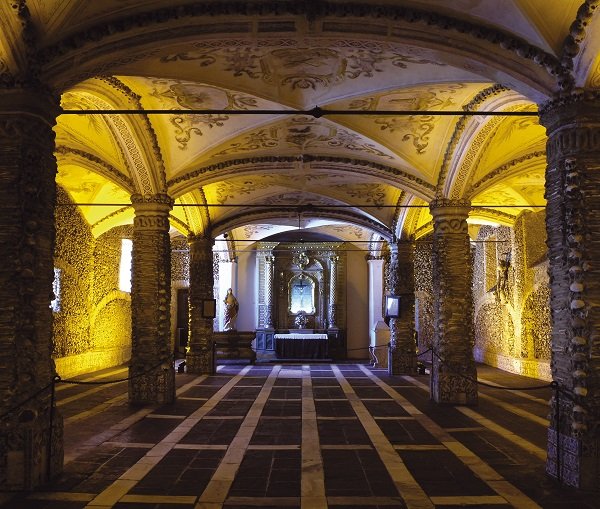The Chapel of the Bones in Évora is one of the most popular, and macabre, monuments in Portugal. But is it not the only one… Évora’s Capela dos Ossos is the best known and the largest of the Portuguese "bone chapels” but there are five more in the Algarve and Alentejo regions.
Bone chapels and ossuaries are pretty common in Europe and have existed for centuries. In the past, cemeteries were much smaller and it was common practice to exhume remains years after burial so that others could be buried in the same place.
Gradually, placing bones and skulls on display became common. The message was clear: life does not end on Earth but continues as explained in the bible.
The Capela dos Ossos de Évora is the best known and the largest of the existing bone chapels in Portugal, but there are two more in the Alentejo region.
The Capela dos Ossos is located in the Church of São Francisco. It was built in the 17th century at the initiative of three Franciscan monks, so that locals could reflect on the transience of life and to get a clear allegory of death.
More than five thousand bones and skulls adorn its walls, ceiling and columns of this chapel, all sourced from the city's cemeteries. There are even two complete skeletons hanging, one of them being a child.
But, drive to the East and find the bone chapel attached to the Parish Church of Campo Maior, the Capela dos Ossos - the second largest in the country, after Évora. The chapel was built in 1766 after the castle was destroyed in an accidental 1732 explosion in a powder magazine that killed more than two-thirds of the population.
Its interior is fully covered with the bones of the victims of this tragedy, while the floor dates back to the 20th century. The architecture is Baroque, similar to the other bone chapels. Again, two complete skeletons are framed on the sides.
And, just to the Northwest, the Capela dos Ossos de Monforte is the smallest bone chapel in Portugal with an area of just over four-square meters. Attached to the Igreja Matriz de Monforte, it was built in the 18th century.
Its interior is chocked full of human skulls, interspersed with bones. In the center stands a small, more conventional altar decorated with candles and religious images. Above the chapel access door, there is a human skull superimposed onto two human bones.



